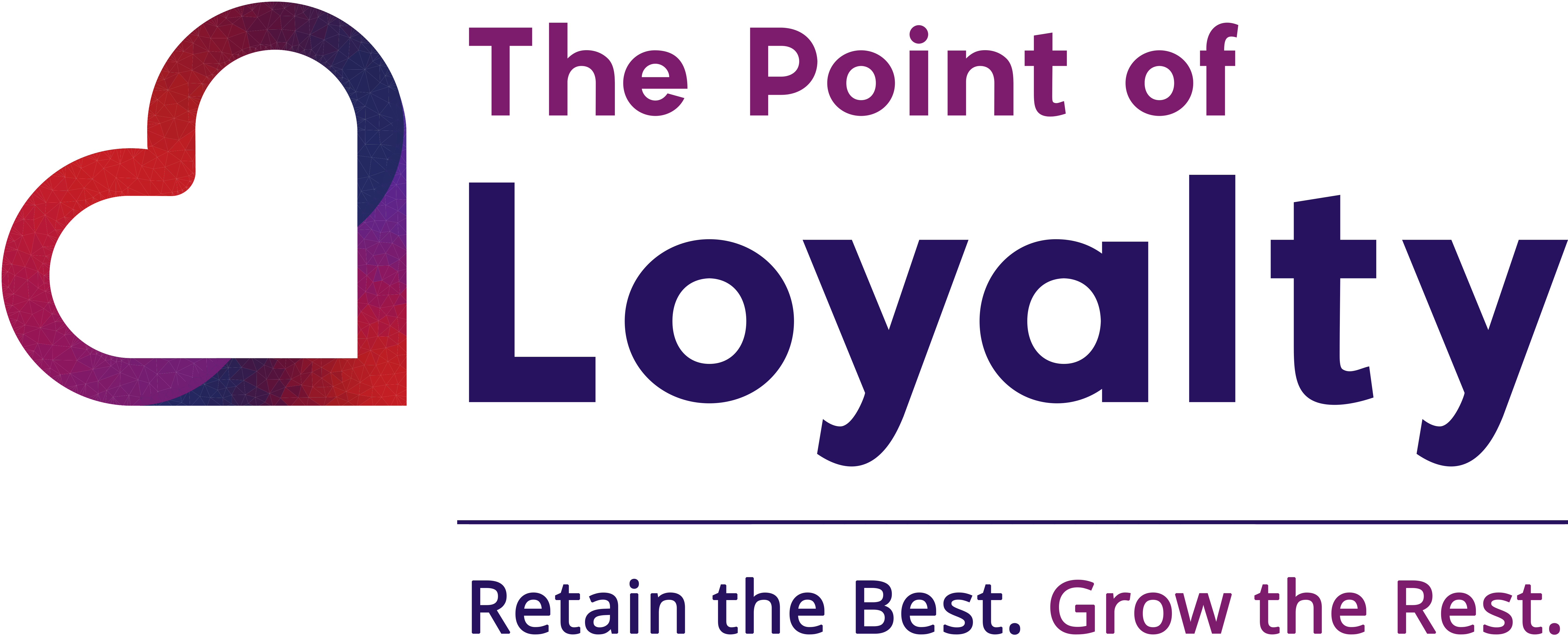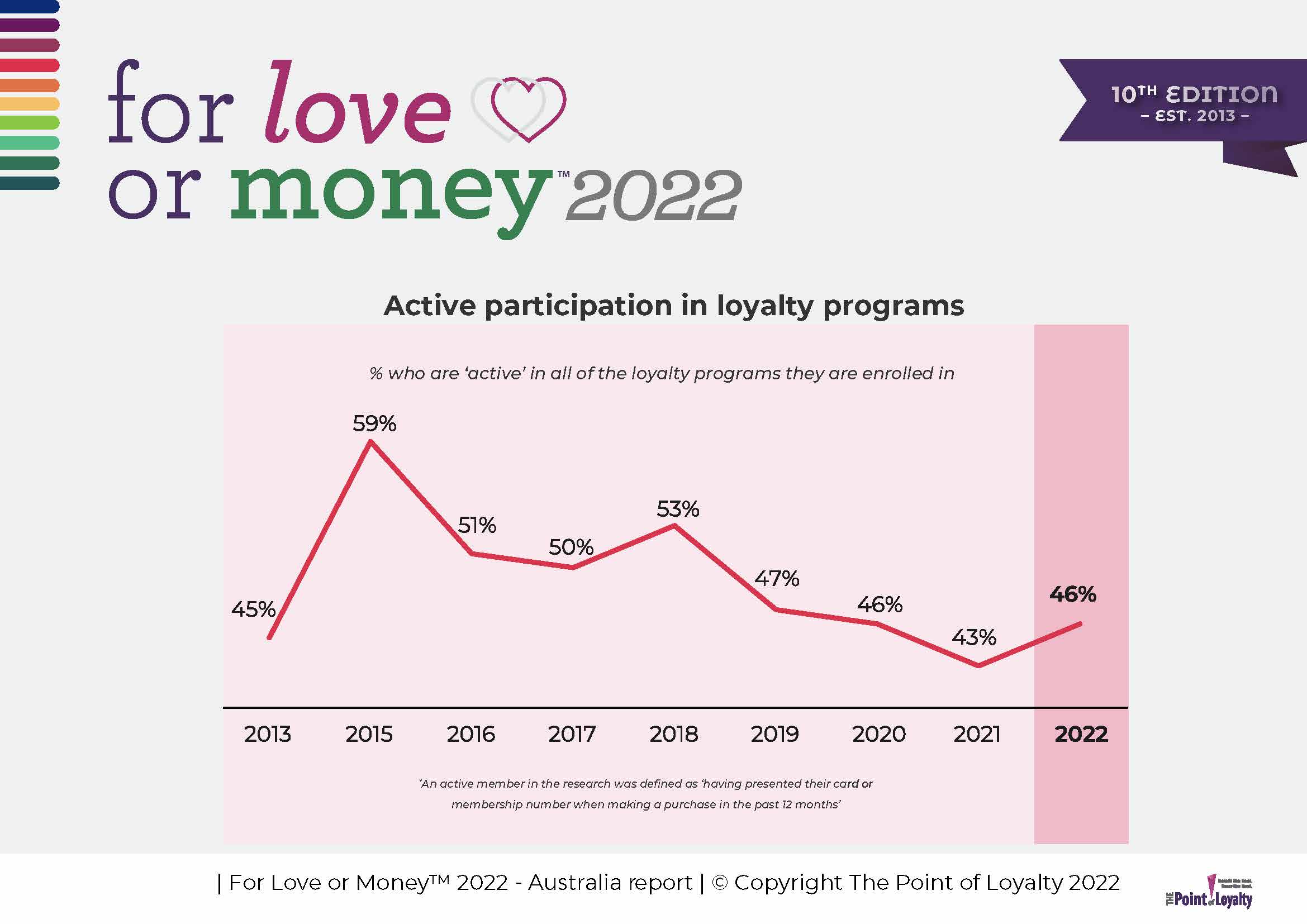For nine years we have been measuring loyalty program member activity in the For Love or Money™ loyalty program research study.
in the 2022 For Love or Money™ study I was happy (and a little relieved) to see the slight increase in loyalty program member activity, although there is still plenty of room for growth.
How is ‘activity’ defined?
An active member in the research are members who are active in all programs they are a member of, with ‘activity’ defined as a member identifying themselves when making a purchase in the last 12 months.
One size does not fit all
The definition provided in For Love or Money™ is not the same for all brands with loyalty programs.
Activity (the action and the time-period) is defined differently by brands based on their program propositions and member behaviour.
I have seen activity defined based on:
- Scan rate (a member identifying themselves through a scanning process at POS when making a purchase)
- Transaction(s) in a period (a purchase made)
- Interaction(s) in a period – earning and / or redeeming a reward.
- Earning can also be based on a non-transactional activity eg earning points for answering surveys/ posting on social media, completing a profile, completing an education module etc.
- Engagement – opening an email. This definition is not as useful as those relating to a transaction or interaction as identified above.
With the different definitions on measuring activity being used, I prefer to define as activity as a transaction or interaction in a predetermined period.
Some might suggest allocating ‘an interaction’ as part of the definition has no direct connection to cash, however programs where community connection takes a higher priority than a transaction e.g. for sports clubs who have member rewards/loyalty program, activity based on an interaction such as attending a game, is more important.
Volume for vanity. Activity for sanity. Both are a better reality.
Loyalty programs often share how many members they have.
Volume on its own is a vanity metric.
While volume is the base measure from which to start, activity is a more meaningful metric.
Activity is a sanity metric.
The combination of volume and activity is a better reality.
Contactability is the best reality
Another qualifying point to add to volume and activity is the extra measure of contactability.
How many active and contactable members do you have?
Contactable by direct and consented channels of email, SMS (can be intrusive so consider with care) and App messaging. Direct mail is still channel of contact for some brands and certain demographics.
It might seem obvious; however, I believe the volume of active members become even more qualified when measured by a quantum of contactable members.
Without a measure of contactability, there will be limited insight to influence activity.
So, here’s my recommendation:
Measuring volume by activity and contactability provides more focus on the strategies and actions to improve both.
Shake some feathers with this article
For a more direct, detailed, and thought-provoking view on ‘activity’ and the volume debate, have a read of this article by Phil Hawkins.
Loyalty moment #6: "We've got the most dead members"
Benchmark your loyalty program activity to For Love or Money™ 2022
The For Love or Money™ 2022 report provides an independent benchmark of program activity (as defined).
Use this as a benchmark to measure against as well as consider how to improve the reality of the activity measure.
For more detail on loyalty program activity, you can access a free Executive Summary of the For Love or Money™ 2022 report or purchase full report for a greater depth on activity by gender and the generations.
Have a happy loyalty day!

